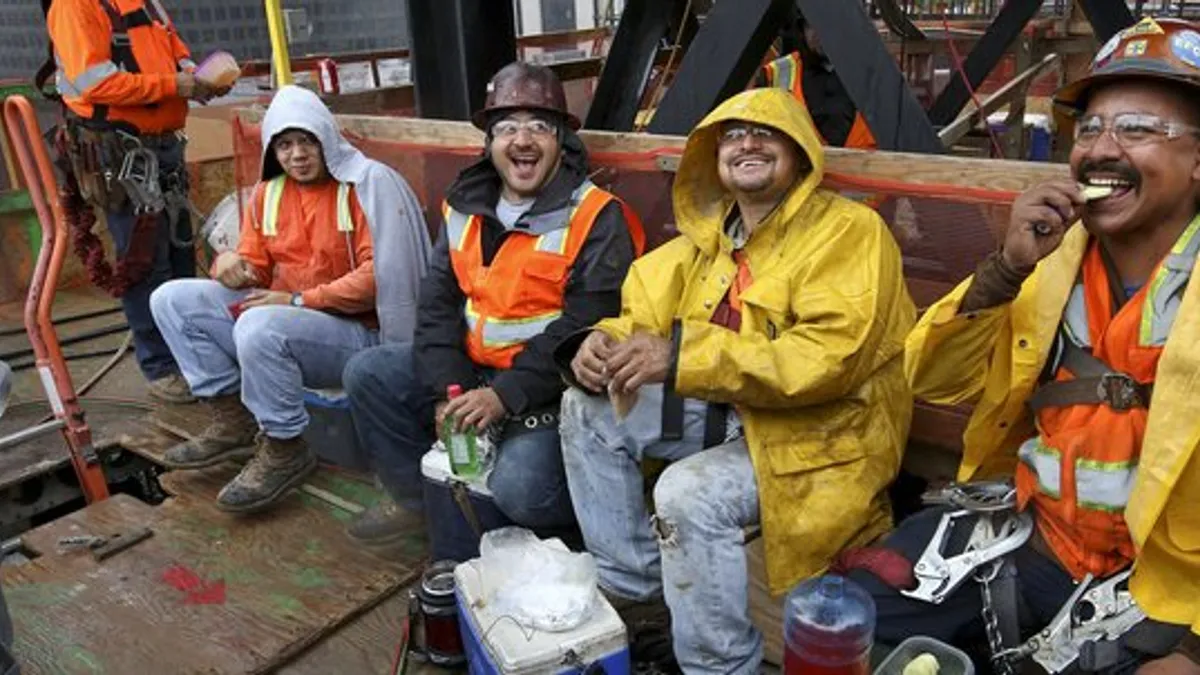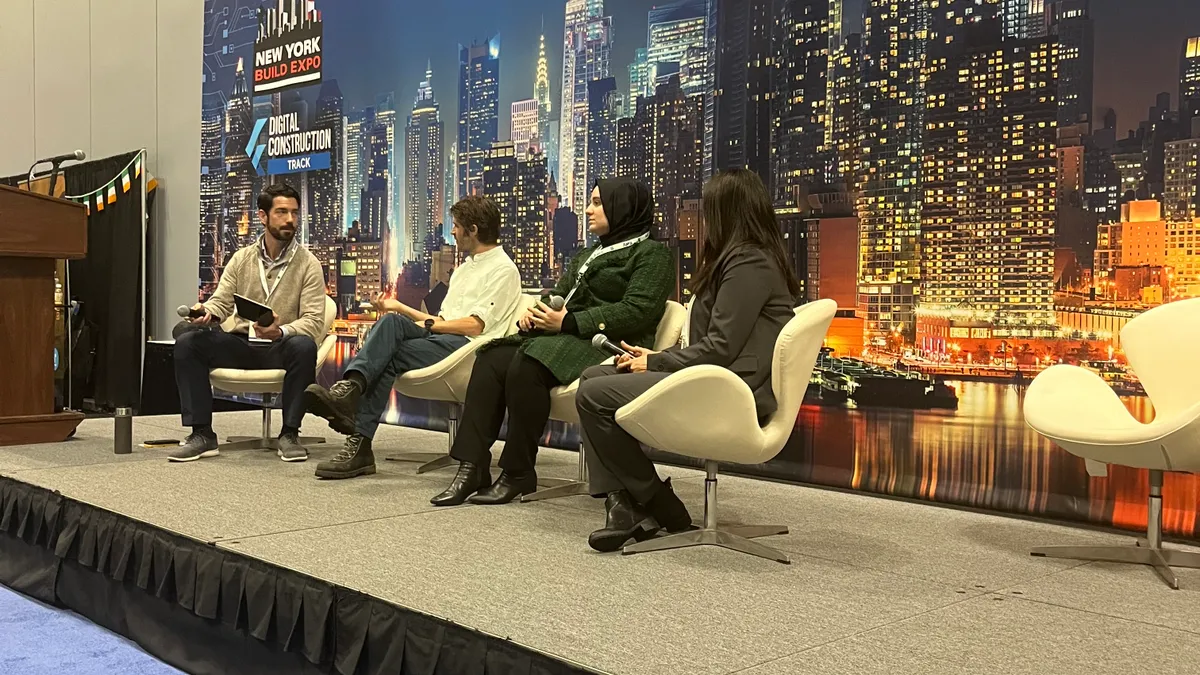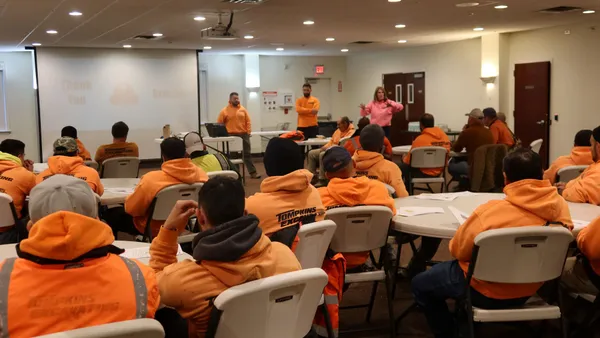Dive Brief:
- After an analysis of select certified payrolls from 25 Camden, New Jersey, construction projects that were beneficiaries of tax breaks from the state, the New Jersey Economic Development Authority (NJEDA) found that only 27 construction jobs went to Camden residents. The mayor of Camden, Francisco "Frank" Moran, said in a letter to the NJEDA that its job creation numbers report painted an incomplete and inaccurate picture.
- For its analysis, the NJEDA used certified payrolls submitted by subcontractors and contractors near the midway point of construction, so, some early and late trades like excavation, concrete, windows and finishes were likely left out of its calculations. Moran said in his letter that a review of all certified payrolls from just five qualifying projects in Camden revealed 174 construction jobs created for local residents — six times the NJEDA's estimate — and that he anticipated further analysis would reveal more.
- Each of the projects in question was a recipient of tax incentives via the Grow New Jersey tax credit program, which took its final applications June 30. While construction job creation was the focus of the NJEDA's analysis, tax credits under the program are tied to generating full-time employment for state residents and capital investment. According to The Philadelphia Inquirer, businesses that have either relocated or promised to relocate to Camden have received $1.6 billion under the Grow New Jersey program since 2013.
Dive Insight:
The push for transparency related to job creation in Camden is no surprise when one considers how much money companies have received to move there. And the issue is not specific to Camden or New Jersey.
Wisconsin lawmakers negotiated a controversial $3 billion tax incentive deal with Taiwanese electronics company Foxconn in exchange for building an LED screen manufacturing complex in the Mount Pleasant, Wisconsin, area. The company has yet to collect on those tax benefits because they have not reached agreed-upon milestones for total permanent, full-time job creation of 13,000 positions. Like the Grow New Jersey program, construction jobs don't count toward that goal. Foxconn has, however, struck deals with local construction firms under a "Wisconsin First" hiring policy, and they represent the majority of contractors working on the project so far.
Construction job creation, said Farrell Fritz attorney Peter Curry, who assists clients in these types of deals, is important when gauging the potential upside of new development for local communities because they create economic benefit beyond the jobs themselves. For example, he said $25 million of labor through the lifecycle of a job might provide a total economic benefit of $35 million.
However, as important as construction jobs are, tracking their creation can be difficult for some agencies, Curry told Construction Dive. Projecting those numbers can be tough as well.
First, the length of time a worker spends on a construction job can't be measured the same way post-construction, full-time employment can. If a developer estimates that the project will create 300 construction jobs, for instance, most of those workers will only be there while their specific trades are performing work on the job. That's why, he said, he makes sure clients go through their projections carefully and don't unintentionally over-promise the number of construction jobs their developments will generate.
For the agencies that do make construction job creation a condition of tax incentives or other taxpayer-funded break programs, they often rely on correct reporting from contractors, subcontractors and even lower-tier contractors, which not only generates a large amount of paperwork but is only as accurate as those filling out the documentation. "Even when agencies require it," Curry said, "it's difficult to monitor."












